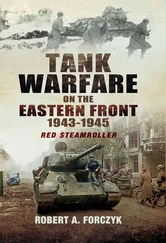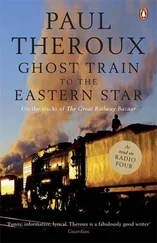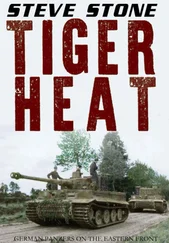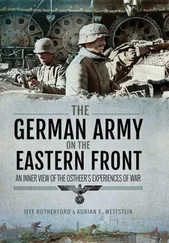V.S. – Verbrauchssatz . A basic load of fuel or amunition.
Vorausabteilung – Vanguard battalion (abbrev. V.A.).
In February 1986, amidst white-out conditions and sub-zero temperatures near the town of Yangpyeong in South Korea, I opened a wooden box that I was only supposed to open in the event of an emergency. Since my tank was alone on an independent reconnaissance mission with no other vehicles to assist, that emergency seemed to be at hand. In order to reach our battalion’s assembly area at the railhead, we had to climb a mountain road with a 30° slope, but every attempt had failed because our tracks slid on the snow and ice. The box came from Germany and it contained snow cleats that could be attached to the tank’s tracks for added traction on snow and ice. They were built by Rheinmetall, the same company which had rushed tank cleats to the Russian Front during the winter of 1941–42.
Forty years later, the US Army bought a few sets for trials and I had been fortunate to receive one, but was instructed to use them only if absolutely necessary. My crew and I mounted the cleats on our tracks in less than an hour and started up the hill. The cleats dug into the snow and ice like teeth and we started to make progress up the slope. However, the temperature was around –23°C (–10°F) and the metal in the cleats grew increasingly fragile and started to shatter. Every 20–30 meters, another cleat would shatter, with pieces falling off the track. Eventually, our tank made it up the slope and back to the assembly area, but every tank cleat was broken by that point and the US Army decided not to purchase more sets of what appeared to be a one-time use item. Nevertheless, I was thankful that modern tankers could benefit from technology that had been developed as a result of the brutal experiences in armoured combat on the Eastern Front decades prior. Indeed, I came to appreciate that there are many lessons to be learned from the armoured operations of that conflict, which will be useful for some time to come.
This is not intended to be a day-by-day campaign narrative, although it may seem that way at times. Nor is it intended to be a ‘guts and glory’ compilation of tactical vignettes, although it will have some elements of that as well. Rather, this book will focus on the operational and tactical levels of combat in order to answer how and why the Red Army’s tank units managed to defeat the heretofore undefeated panzer armies of the Third Reich.
Issues that are tangential to armoured operations will only be addressed in passing or omitted altogether, but I do intend to touch upon many topics related to tank technology, production and maintenance that are usually left out of other histories. I also intend to tell this story, as much as the reference materials allow, from both sides’ points of view rather than just one, which has unfortunately been the case in so many previous Eastern Front histories.
‘We are fifty or a hundred years behind the advanced countries. We must make good this distance in ten years. Either we do it, or they will crush us’.
Josef Stalin, 4 February 1931
The Russo-German War in general, and armoured combat on the Eastern Front in particular, have remained popular subjects in English-language historiography of the Second World War for the past six decades. However, much of what Anglo-American readers know or think they know about armoured warfare on the Eastern Front has been shaped by self-serving memoirs such as Guderian’s Panzer Leader or von Mellenthin’s Panzer Battles , or popular wargames such as SPI’s Panzerblitz (1970) and a new generation of computer wargames. A cult of German tank-worshippers has arisen and its members are now firmly entrenched in their belief that all German tanks (meaning their beloved Tiger and Panther series) were better than any Soviet tanks and that the Red Army’s tank forces only prevailed because of numerical superiority. There is a grain of truth in this argument, which was fostered by German veterans seeking to perpetuate the Third Reich’s propaganda-line that the victory of the Red Army’s ‘barbarian hordes’ was due to mass, not skill. However, the quantity over quality argument ignores a variety of critical factors encompassing the opposing war-fighting doctrines, strategic miscalculations and terrain/weather that significantly influenced the outcome of armoured operations in the East. Key facts, such as the German inability to develop a reliable diesel tank engine while the Soviets had one in production before Operation Barbarossa began, are often just ignored – even though it had a significant impact on the outcome of mechanized operations on the Eastern Front. Yet material factors were not the only influences upon armoured warfare on the Eastern Front. Napoleon’s dictum that, ‘in war, the moral is to the material as three is to one,’ proved quite apt on the Eastern Front of 1941–45, with a host of moral and non-material factors influencing the outcome of battles and campaigns.
Looking across a hexagonal grid super-imposed over a two-dimensional map sheet, cardboard counters or plastic miniatures representing German Panthers or Tigers look so much more impressive than the opposing Soviet T-34s. The German tanks’ strengths – long-range firepower and armoured protection – carry great weight in these kinds of simulations, while their main weaknesses – poor mobility and poor mechanical reliability – are only minor inconveniences, if depicted at all. For example, the oft-repeated canards about the Panther’s ‘teething problems’ at Kursk are fobbed off as a temporary issue, costing a wargamer a few movement points, without realizing that the Panther had persistent mobility issues throughout its career that prevented it from conducting the kind of wide-ranging mobile operations required by German maneuver warfare doctrine. The main strengths of the Soviet T-34 – reliable mobility over vast distances on its own tracks and suitability for mass production – are factors that lie outside most tactical-level simulations. Consequently, two generations of Anglo-American history buffs have been presented with numerous simulations that emphasize the superiority of German tanks and the cannon-fodder nature of Soviet tanks. The Cold War also played a role in shaping perceptions, with a large number of German veteran accounts that were often viewed uncritically, while there was a dearth of useful accounts from the Soviet side. When available, Soviet accounts were routinely discounted as lies or propaganda. After the collapse of the Soviet Union, fifty years after the onset of Operation Barbarossa, this ingrained Western perception began to change as previously unavailable historical material emerged from Soviet-era archives, but the balance of Eastern Front historiography in English is still heavily biased toward the German perspective. This book hopes to contribute to redressing that imbalance.
Another problem in evaluating armoured warfare on the Eastern Front is that much of the analysis to date has been fairly tactical in nature, focusing on a single campaign such as Stalingrad or Kursk, which tends to gloss over the impact of long-term trends that shaped each sides’ combat performance. The Russo-German War lasted for forty-six and a half months. It was not decided by a single battle or campaign. This study intends to examine how Germany’s panzer units performed against the Red Army’s tank units during this entire period and why the Soviet Union prevailed. It is not my intent to provide a detailed chronology of every tank battle, but rather to discern the main trends emerging over time. I also intend to highlight actions that are often ignored or glossed over in other histories, which often suggest that nothing significant was happening on other parts of the Eastern Front when big battles were occurring around places like Stalingrad and Kursk.
Читать дальше







![John Stieber - Against the Odds - Survival on the Russian Front 1944-1945 [2nd Edition]](/books/405234/john-stieber-against-the-odds-survival-on-the-russian-front-1944-1945-2nd-edition-thumb.webp)




